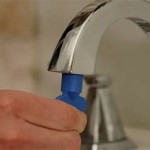How To Get Rid Of Cat Urine Smell In Bathroom
Cat urine odor in a bathroom presents a significant challenge for homeowners. Unlike other household smells, cat urine possesses a unique chemical composition that allows it to penetrate porous surfaces and linger for extended periods. This resilience necessitates a proactive and comprehensive approach to effectively eliminate the odor, rather than simply masking it with air fresheners.
The pungent smell of cat urine stems from the breakdown of urea, a waste product excreted by cats. As the urine dries, bacteria decompose the urea, releasing ammonia, which contributes to the initial strong ammonia odor. Over time, another process occurs involving the breakdown of urea into mercaptans, compounds also found in skunk spray. These mercaptans contribute to the lingering, more persistent, and often more unpleasant odor that is difficult to remove.
Prompt and thorough action is critical to prevent the urine from permanently setting into porous materials like grout, tile, and subflooring. The longer the urine remains, the deeper it penetrates, making complete odor removal significantly more difficult. Understanding the chemical composition of cat urine and its interaction with various surfaces is essential for selecting appropriate cleaning agents and techniques.
Successfully eradicating cat urine odor from a bathroom involves identifying all affected areas, selecting appropriate cleaning solutions, and employing effective cleaning methods. The following sections will outline a step-by-step process to address this common household issue.
Identifying the Source of the Odor
The first and arguably most vital step in eliminating cat urine odor is accurately locating all affected areas. Cats, particularly when experiencing stress, medical issues, or litter box aversion, may urinate in unexpected locations. Therefore, a thorough inspection of the bathroom is necessary.
The most common method for detecting urine spots involves using a black light (UV light) in a darkened room. Cat urine contains phosphorus, which glows under ultraviolet light. This allows one to visibly identify areas contaminated with urine, even if the stain is no longer visible to the naked eye. A black light flashlight is the ideal tool for this purpose, as it can be easily maneuvered around the bathroom.
When using a black light, ensure the bathroom is as dark as possible. Turn off all lights and close the door to eliminate external light sources. Slowly scan the entire bathroom, paying close attention to areas where cats are likely to urinate, such as around the toilet, sink, shower, and behind the bathtub. Note any glowing spots identified under the black light. Mark these spots with painter's tape or another temporary marker to ensure they are not missed during the cleaning process.
If a black light is not available, relying on one's sense of smell is another option, albeit less precise. In a well-ventilated bathroom, attempt to pinpoint the location where the odor is strongest. Move around the room, sniffing in different areas to narrow down the source. This method is less reliable as the odor can permeate throughout the bathroom, making it difficult to pinpoint the exact location of the urine stain. It is helpful to get down low to the ground, as the odor tends to concentrate near the floor.
Beyond visual and olfactory inspections, consider common areas where cats might urinate due to their physical nature or behavioral tendencies. Look for urine stains or wetness around the base of the toilet, especially where the bowl connects to the floor. Check behind the toilet, where access is limited and cleaning might be overlooked. Carefully inspect the grout lines between tiles, as these are porous and readily absorb urine. Examine the seams and corners of the bathroom, as these areas can trap urine, especially if the cat has sprayed.
Once all potential sources of the odor have been identified, the next step involves selecting the appropriate cleaning solutions.
Selecting an Effective Cleaning Solution
Choosing the right cleaning solution is crucial for effectively neutralizing cat urine odor. Standard household cleaners are often ineffective and can even exacerbate the problem. Cleaners containing ammonia, for example, should be avoided as they can mimic the scent of cat urine, potentially encouraging the cat to re-offend in the same spot.
Enzyme-based cleaners are generally considered the most effective option for removing cat urine odor. These cleaners contain enzymes that break down the uric acid crystals found in cat urine, effectively neutralizing the odor at its source. Enzymes catalyze the breakdown of organic matter like urine into carbon dioxide and water. It is important to choose an enzyme cleaner that is specifically formulated for pet urine, as these cleaners contain the appropriate enzymes to target the specific compounds present in cat urine.
When selecting an enzyme cleaner, read the product label carefully and follow the manufacturer's instructions. Some enzyme cleaners require pre-treatment or a specific dwell time to be effective. Ensure the cleaner is safe for use on the surfaces in the bathroom, such as tile, grout, and porcelain. Test the cleaner on an inconspicuous area first to ensure it does not damage or discolor the surface.
In addition to enzyme-based cleaners, other cleaning solutions can be used to complement the enzymatic treatment. A solution of baking soda and water can be effective for absorbing odors and neutralizing acidity. Baking soda is a natural deodorizer and can be applied as a paste to affected areas, allowing it to dry completely before vacuuming or wiping it away. White vinegar, diluted with water, can also be used to neutralize odors and disinfect surfaces. Vinegar is a mild acid that can help to break down urine stains and kill bacteria.
Avoid using bleach to clean cat urine stains, particularly on carpets or fabrics. While bleach can kill bacteria, it does not effectively neutralize uric acid crystals. Furthermore, bleach can react with ammonia in cat urine, creating toxic fumes. Bleach can also damage or discolor certain surfaces, so it is generally not recommended for use on cat urine stains.
Once the appropriate cleaning solution has been selected, the next step involves thoroughly cleaning the affected areas.
Thoroughly Cleaning the Affected Areas
Effective cleaning requires a systematic approach. Simply spraying a cleaning solution onto the surface and wiping it away will likely not eliminate the odor completely, especially if the urine has penetrated deep into porous materials. A multi-step cleaning process is essential for optimal results.
Begin by blotting up any fresh urine with paper towels or a clean cloth. Avoid rubbing the urine, as this can spread it further and force it deeper into the surface. Apply firm and consistent pressure to absorb as much of the urine as possible. Discard the soiled paper towels or cloth in a sealed plastic bag to prevent the odor from spreading.
Next, apply the chosen cleaning solution to the affected area. If using an enzyme-based cleaner, saturate the area thoroughly, ensuring that the cleaner penetrates deep into the porous materials. Follow the manufacturer's instructions regarding dwell time. Some enzyme cleaners require several hours of contact time to effectively break down the uric acid crystals. Allow the cleaner to air dry completely. Do not wipe it away, as this can interfere with the enzymatic process.
For areas with persistent odors or stains, a second application of the cleaning solution may be necessary. Repeat the saturation and dwell time process, allowing the cleaner to air dry completely. If the odor persists after several applications, consider using a more concentrated cleaning solution or consulting with a professional cleaning service.
For porous surfaces like grout, consider using a grout brush to scrub the area after applying the cleaning solution. A grout brush can help to dislodge urine and debris from the grout lines, allowing the cleaning solution to penetrate deeper. Apply the cleaning solution, scrub the grout lines with the brush, and then allow the solution to dwell for the recommended time before rinsing with clean water.
After cleaning the affected areas, ventilate the bathroom thoroughly to allow the cleaning solution to evaporate and the odor to dissipate. Open windows and doors to allow fresh air to circulate. Consider using a fan to speed up the drying process. Proper ventilation is crucial for preventing mold and mildew growth and ensuring that the cleaning solution does not leave behind any residue.
In cases where the urine has penetrated deep into the subflooring or other structural materials, removing and replacing the affected materials may be necessary. This is a more drastic measure, but it may be the only way to completely eliminate the odor in severe cases. Consult with a professional contractor or flooring specialist to assess the extent of the damage and determine the best course of action.
Following these steps will significantly reduce or eliminate cat urine odor in a bathroom, contributing to a more pleasant and hygienic living environment. Regular cleaning and prompt attention to any accidents will prevent the buildup of urine and minimize the risk of recurring odor problems.

How To Get Rid Of The Bathroom Urine Smell

Clean Pet Urine From Carpet Naturally Gerrard Larriett

3 Proven And Safe Ways To Get Rid Of Cat Smell The Vets

Get Rid Of Dog And Cat Urine Odors The All Natural Way Smells Remover

How To Get Rid Of Cat Smell A Guide

How To Get Rid Of Cat Urine Smell Life On Summerhill

4 Ways To Get Rid Of Urine Smell Wikihow

How To Get Rid Of Cat Smell On Carpet And Wood Remove In House
Does Vinegar Get Cat Urine Smell Out Of Carpet Quora

How Can I Remove This Cat Urine Stain From My Fiberglass Tub Hometalk
Related Posts







